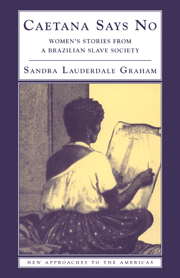Summary
These stories begin with a marriage and a death. They tell of two women, one young and born a slave, the other old and from an illustrious family. By their origins these women mark the tangible extremes of wealth, influence, and power in nineteenth-century Brazilian life and culture. Yet, each in her own way sought to have her way: the slave woman to avoid an unwanted husband; the woman of privilege to endow a family of her former slaves with resources for a free life. Their attempts drew them ever more firmly into the relations of influence exercised by the men who had power in their lives: the planter and owner of the slave woman who ordered her marriage, and her uncle and godfather, a fellow slave; and another planter who managed his elderly aunt's affairs while she lived and who served as executor for her estate after she died. The women's stories cannot be told, then, without including their crucial ties to these worldly and important men. But even by making the stories as complete as possible, they end ambiguously. Or, rather, they have no endings. Whether the slave woman succeeded in living an unmarried life is uncertain, although later I tell you my ideas about that; and how the family of freed slaves ended up remains differently unresolved.
The broad setting is the Paraíba River Valley in southeastern Brazil during the early 1830s into the mid-1860s.
- Type
- Chapter
- Information
- Caetana Says NoWomen's Stories from a Brazilian Slave Society, pp. xix - xxiiPublisher: Cambridge University PressPrint publication year: 2002

